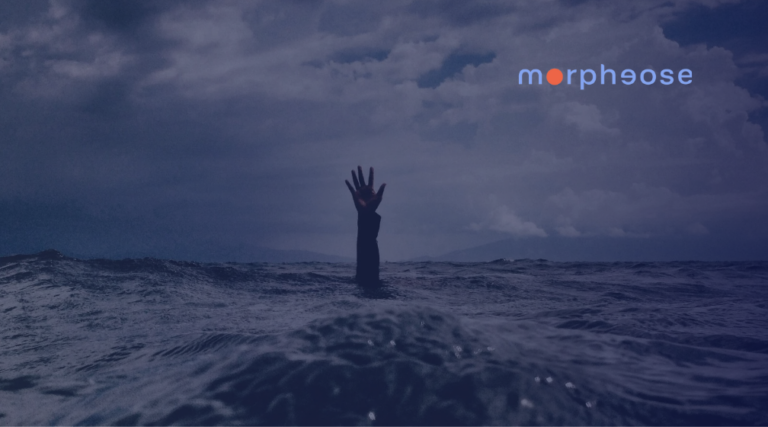
If you ask any executive, leader, or professional how they feel about today’s work climate, you’ll likely hear a familiar story—overwhelm, constant change, and a sense of running at full speed just to stay in place. The rate of disruption in business today feels like an unending loop of high-stakes moments, leaving teams and individuals mentally exhausted.
But this isn’t just a subjective impression—it’s a neurological and psychological reality. Research shows that prolonged exposure to stress rewires the brain’s response to uncertainty, reducing cognitive flexibility and impairing strategic decision-making [Landry et al., 2017]. The ability to navigate this pressure isn’t just about bouncing back after adversity—it’s about proactively shaping your response before stress even takes hold.
This is where presilience comes in.
Presilience is the proactive cultivation of mental and emotional agility before challenges arise. While resilience helps individuals recover from setbacks, presilience is the ability to anticipate, regulate, and master your state of mind ahead of time.
Think of it as upgrading your mental operating system—training your mind to cool down before emotional intensity peaks. This ability isn’t just found in elite athletes or military strategists—it’s a trainable skill grounded in neuroscience, contemplative practices, and introspective techniques.
At morpheose, we approach leadership beyond the traditional business definition. While we integrate leadership in relation to others—team performance, decision-making, and organizational adaptability—we focus first on self-leadership. Becoming the leader of self means mastering your internal systemics (thought patterns, emotional regulation, unconscious reactions) before applying leadership to external systemics (relationships, teams, and organizations). Without leading oneself, leading others effectively remains an illusion.
The Science of Presilience: A Predictive Mindset
The human brain operates as a predictive system, constantly forecasting possible outcomes and adjusting responses accordingly [Jiang et al., 2017]. When faced with high-pressure situations, individuals trained in anticipatory emotion regulation exhibit lower stress responses, reduced cortisol spikes, and improved decision-making under uncertainty [Tuominen et al., 2021].
Techniques such as hypnosis, visualization, and structured cognitive preloading enable professionals to rehearse high-stakes scenarios in advance, reducing the brain’s perceived threat level when those situations occur [Hobson et al., 2017]. This is why top executives, surgeons, and first responders maintain composure in crisis—they have trained their minds before the storm arrives.
Beyond Resilience: The Morpheose Approach to Presilience
At Morpheose, we integrate psychodynamic systems thinking, neuroscience, and contemplative traditions like Buddhist equanimity (upekkha) and impermanence (anicca) to develop presilience in corporate settings.
- Equanimity: The ability to remain calm and clear-headed regardless of external fluctuations. By cultivating equanimity, leaders gain emotional distance from momentary crises, allowing them to respond with intentionality rather than react impulsively [Siegel, 2020].
- Impermanence: A deep understanding that all conditions—market shifts, conflicts, stress—are temporary. Embracing impermanence reduces attachment to control, fostering adaptability and strategic clarity in uncertain environments.
- Hypnosis & Neuroplasticity: Using hypnotherapeutic techniques, we help professionals rewire unconscious stress responses, embedding presilient neural patterns that support emotional mastery and cognitive agility [Kirsch, 2018].
Practical Strategies to Cultivate Presilience
1. Mental Preloading: “Cool Down Before the Heat Rises”
Highly effective leaders train their nervous system to downregulate stress responses before situations escalate. This involves mental simulations, guided introspective techniques, and hypnosis-based cognitive reframing to reduce the perceived threat of high-pressure moments [Spiegel, 2017].
2. The “No Exit” Rule: Tolerate Discomfort Until It Becomes Familiar
The nervous system adapts through repeated exposure to controlled stress. Instead of instinctively seeking escape from discomfort, presilience training encourages individuals to stay present with intense emotions, ambiguity, and high-stakes decision-making until their tolerance threshold increases.
3. Ritualized Repetition: Strengthening Neural Pathways
Neuroscientific studies highlight that ritualized behaviors enhance cognitive stability, reinforcing a structured mental framework in unpredictable environments [Hobson et al., 2017]. Leaders who engage in daily introspective practices—whether through hypnosis, meditation, or structured visualization—build an automatic presilient response system.
Why Does This Matter for Leaders & Teams?
In today’s business world, relying on resilience alone is not enough. Presilience is the next competitive edge, enabling individuals and teams to:
✅ Respond rather than react—maintain clarity even in volatile environments.
✅ Reduce burnout—regulate emotions before stress accumulates.
✅ Enhance team performance—create a culture of psychological safety and adaptability.
✅ Drive strategic agility—anticipate change and navigate disruption with confidence.
If your organization is ready to move beyond reactionary resilience to proactive presilience, explore our executive training programs at morpheose.com
Dare to Know Yourself.
References
- Hobson, N. M., Schroeder, J., Risen, J. L., Xygalatas, D., & Inzlicht, M. (2017). The Psychology of Rituals: An Integrative Review. Personality and Social Psychology Review, 21(1), 1-25.
- Jiang, H., White, M. P., Greicius, M. D., Waelde, L. C., & Spiegel, D. (2017). Brain Activity and Functional Connectivity Associated with Hypnosis. Cerebral Cortex, 27, 4083–4093.
- Kirsch, I. (2018). Response Expectancy and the Placebo Effect. International Review of Neurobiology, 138, 81–93.
- Landry, M., Lifshitz, M., & Raz, A. (2017). Brain Correlates of Hypnosis: A Systematic Review and Meta-Analytic Exploration. Neuroscience & Biobehavioral Reviews, 81, 75–98.
- Siegel, D. (2020). The Mindful Brain: Reflection and Attunement in the Cultivation of Well-Being. W.W. Norton & Company.
- Spiegel, D. (2017). Tranceformations: Hypnosis in Neuroscience. Annual Review of Neuroscience, 40, 195-211.
- Tuominen, J., Kallio, S., Kaasinen, V., & Railo, H. (2021). Neurosciences of Consciousness: Segregated Brain During Hypnosis. Oxford Neurosciences Review, 2021, 1-17.


